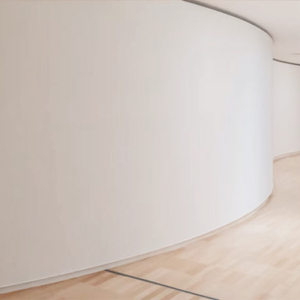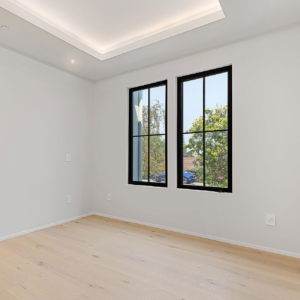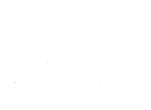Why a Clean Worksite Matters in Drywall Work
/in Drywall, Drywall Contractor, Drywall Installation, Drywall Repair/by Sandra ChristieThe Importance of Proper Drywall Installation in Moisture-Prone Areas
/in Drywall, Drywall Installation, Drywall Installer/by Byron AbarcaTransforming Untapped Potential into Usable Space
/in Basement Remodel, Contractor, Drywall, Drywall Installation, Finished Basement/by Byron AbarcaThe Appeal of Open-Concept Kitchens
/in Drywall, Drywall Installation, Open-Concept Kitchen/by Byron Abarca Closed-off living spaces are slowly disappearing as the open-concept kitchen rises in popularity. This design trend not only fosters connection and maximizes space but also offers endless design possibilities when coupled with expert drywall installation techniques. Here are several compelling reasons to delve into the world of open living, whether you plan to renovate an existing kitchen or build a new home.
Closed-off living spaces are slowly disappearing as the open-concept kitchen rises in popularity. This design trend not only fosters connection and maximizes space but also offers endless design possibilities when coupled with expert drywall installation techniques. Here are several compelling reasons to delve into the world of open living, whether you plan to renovate an existing kitchen or build a new home.
Embracing Connection
The biggest allure of an open-concept kitchen lies in its ability to foster connection and togetherness. By eliminating walls and barriers, the kitchen seamlessly integrates with adjoining living and dining areas, promoting interaction between family members and guests. With the expertise of an experienced drywall installer, the transition between spaces creates a cohesive environment that ultimately enhances the flow of conversation and activity.
Enhancing Kitchen Workflow
The installation of drywall plays a big but silent role in optimizing the functionality of an open-concept kitchen. Properly installed drywall provides a smooth, durable surface that facilitates efficient kitchen workflow. Whether preparing meals, supervising children, or entertaining guests, the absence of obstructive walls ensures a fluid and organized space where tasks can be accomplished with ease.
Expanding Space and Light
An open-concept kitchen, coupled with seamless drywall installation, creates an air of spaciousness, making even modest areas feel larger and more inviting. With no walls to obstruct, natural light fills the space, creating an airy ambiance. When walls are taken down, expertly installed drywall patching and repairing ensures a seamless finish that enhances the overall aesthetic while maximizing light, uplifting the mood of the entire home.
Improving Entertaining
Hosting gatherings and entertaining is transformed with an open kitchen. The absence of walls allows the cook to interact with guests while preparing meals, removing barriers between host and party. With the right drywall installation providing a polished backdrop, a fluid layout facilitates easy movement between the kitchen, dining, and living areas, creating a warm and inclusive atmosphere.
Balancing Privacy and Openness
While openness is a hallmark of open concept, it’s essential to strike a balance between openness and privacy. This is achieved through advanced drywall installation techniques. Strategic design elements such as partial walls, half-height partitions, or well-placed furniture can delineate zones while preserving the overall open feel. With drywall serving as the foundation, these features define spaces and provide a sense of intimacy without compromising the benefits of an open layout.
Achieving Flexible Design
The beauty of the open-concept kitchen is further enhanced by design versatility. Homeowners enjoy the freedom to tailor a space to their tastes and requirements – whether they prefer a modern, sleek look or a rustic, cozy feel. With intact drywall providing a uniform canvas, cohesive color schemes and materials can be smartly integrated, creating a space that reflects the homeowner’s style and personality while bridging the gap between two rooms.
Supporting Multi-Functional Spaces
Open living encourages multi-functional spaces, adapting to the diverse needs of modern lifestyles. The kitchen can serve as a workspace, homework area, or even a cozy reading nook with the right drywall installation. The flexibility of the open concept, combined with skilled drywall techniques, allows homeowners to design and rearrange the space according to their evolving needs, maximizing functionality and versatility.
Blending Design and Functionality Through Expert Drywall Installation
The open-concept kitchen offers a harmonious blend of connectivity, function, and style, which is why it continues to attract homeowners and designers alike. With careful planning and guidance from drywall professionals, you can achieve a kitchen you’ll love for years to come.
Innovative Drywall Design Ideas to Elevate Interior Spaces
/in Drywall, Drywall Design, Drywall Installation, Home Renovation, Interior Design/by Byron Abarca
In the realm of home renovation and interior design, drywall is often considered a fundamental element, serving as the blank canvas for a homeowner’s vision. But drywall can be much more than just a functional component. It can also serve as a versatile and dynamic medium for creative expression. Here are some drywall design ideas that elevate and add sophistication to interior spaces.
Recessed Niches
An innovative way to incorporate drywall into your interior design scheme, these built-in alcoves provide stylish and functional display areas for showcasing artwork, collectibles, or decorative objects. Recessed niches can be seamlessly integrated into walls, creating a custom-finished look that maximizes available space while adding depth and dimension to a room.
During the drywall installation process, precise measurements must be taken to ensure that recessed niches are properly aligned and proportioned. Careful attention should also be paid to lighting and finishing details to enhance the visibility and visual impact of displayed items.
Decorative Paneling
Drywall paneling offers endless possibilities for adding texture, pattern, and visual interest to interior walls. Whether through the use of raised panels, geometric shapes, or intricate designs, decorative paneling can transform ordinary walls into works of art. From modern and minimalist to ornate and traditional, there are countless styles and patterns to choose from, allowing homeowners to personalize their spaces to suit their tastes and preferences.
Drywall paneling can be installed as individual panels or as seamless, continuous surfaces, depending on the desired aesthetic and architectural requirements. Skilled drywall contractors can create custom paneling designs that complement the overall design scheme of the home, enhancing its visual appeal and character.
Curved Walls
Traditional walls are typically flat and rectangular, but with modern advancements in drywall installation techniques, curved walls have become increasingly popular. While not appropriate for every home, curved walls can add a sense of fluidity and movement to a space, breaking up monotony and creating visual interest. Whether gently arcing around a corner, curling around a spiral staircase, or sweeping gracefully across a room, curved walls can impart elegance to any interior.
To achieve curved walls, specialized framing techniques and flexible drywall materials are utilized during the installation process. Experienced drywall contractors can expertly shape and mold the drywall to conform to the desired curvature, resulting in seamless and visually stunning results.
Textured Finishes
Texture is a powerful design element that can add depth, dimension, and tactile interest to interior walls. Drywall texture techniques, such as skip trowel, knockdown, or orange peel, can create a variety of effects ranging from subtle and understated to bold and dramatic. These Texture techniques can be applied to entire walls or used selectively to accentuate architectural features or focal points within a room.
In addition to traditional drywall texture methods, innovative techniques such as 3D printing and sculptural molding are emerging as exciting options for creating unique and customizable wall textures. These cutting-edge approaches allow homeowners to experiment with new forms and materials, pushing the boundaries of conventional drywall design.
Integrated Lighting
Often called the “jewelry” of a finished space, lighting plays a key role in interior design. Drywall offers a versatile platform for integrating lighting fixtures into architectural elements of a space. Recessed lighting, cove lighting, and LED strips can be incorporated directly into drywall ceilings, walls, and niches, providing both ambient illumination and accent lighting for highlighting artwork, architectural details, or decorative features.
To make this happen, provisions must be made for electrical wiring and fixture mounting during the drywall installation process. Pre-planning is essential to ensure proper placement and coordination of lighting fixtures. This will ensure that lighting elements are seamlessly integrated into finished walls to achieve the desired ambiance and visual impact within the space.
Drywall is much more than just a basic building material; it is a canvas for creativity in interior design. Drywall design ideas such as curved walls, recessed niches, decorative paneling, textured finishes, and integrated lighting, can elevate interior spaces to new heights of style and sophistication. Whether undertaking a major home renovation or simply looking to refresh a room, the possibilities for creative expression with drywall abound.
Four Reasons to Choose Drywall Contractors over DIY
/in Drywall Contractors, Drywall Installation/by Byron Abarca If you’re planning a renovation, you may be tempted to tackle the drywall installation yourself, but it really makes sense to hire a professional drywall contactor. This makes even more sense if your remodeling project involves complex wall lines, such as those found in dormers, attics, and rooms with cathedral ceilings.
If you’re planning a renovation, you may be tempted to tackle the drywall installation yourself, but it really makes sense to hire a professional drywall contactor. This makes even more sense if your remodeling project involves complex wall lines, such as those found in dormers, attics, and rooms with cathedral ceilings.
When drywall is installed properly, the finished walls look straight and seamless. But a poor drywall installation can result in walls that are bowed, angled, or uneven, with unsightly seams and tape marks.
That’s why drywall installation is one home improvement project best left to professionals. Although it might seem easy in videos and DIY articles, drywall installation takes a high level of skill and experience to get the job done right.
Here are four reasons to hire a drywall contractor:
1. Drywall Contractors Have Mastered Their Craft.
The most important part of any drywall installation is finishing. Walls should look even and polished, but creating smooth, seamless walls can prove difficult for those with little experience.
Installing drywall is more complicated than it seems. Novice installers lack the experience to install flawlessly on their first attempt and may never achieve professional results. With their years of experience, professional drywall contractors know how to make precise measurements and cuts.
In addition, good drywall installers use an expert seam-filling technique. Seams are taped and covered with a thin layer of drywall mud, using a precise application method that makes them disappear. Drywall professionals know exactly how much compound to apply to seams – just enough to bind, but not so much that it requires excessive sanding. They know how to get that perfect, smooth finish every time.
2. Drywall Contractors Bring the Right Tools for the Project.
Professional drywall contractors arrive with all the proper tools needed to cut, hang, tape, and sand. Many of these are specialized tools not found in the average homeowner’s toolbox. Drywall professionals also have the stilts, ladders, and scaffolding needed to reach ceilings and other high places. Most importantly, contractors have extensive experience walking on stilts and know how to safely use all these tools and equipment.
3. Drywall Professionals guarantee their work.
One of the best reasons to hire a drywall contractor is the guarantee. Good professionals will guarantee their work, giving a homeowner complete peace of mind. Establishing a relationship with a drywall professional can be very helpful over time, as accidental damage can happen. Knowing you have a trusted professional to call in an emergency can save time and eliminate stress.
4. Drywall Contractors can save you time and money.
Installing, taping, mudding, and sanding are drywall crafts that are perfected over time. It can be tempting to try to do this type of work yourself to save money. But without the proper experience, drywall can be damaged, either in transport or with inaccurate cuts. Installation can take several weekends and leave a big mess to clean up when the project is over. By hiring a pro, you can also avoid spending money on tools and supplies you will never need again. Peace of mind is priceless. Hire the right drywall professionals and allow them to take care of everything.
Frequently Asked Questions About Drywall
/in Drywall Installation, Drywall Repair, Uncategorized/by Byron AbarcaWhat is Drywall?
Drywall has several different names, such as wallboard, gypsum board, or Sheetrock® Brand panels. It is made from a mineral called gypsum, which is naturally found in sedimentary rocks. To make drywall, processed gypsum is pressed between two sheets of thick paperboard backing.
Where is drywall used?
Drywall is only used on the interior walls of houses and buildings. It cannot be used for exterior applications, as it cannot stand up to outside weather. Drywall is an ideal interior building material, as it is fast to install, durable, and can be repaired with relative ease when damaged. Drywall is also great because of its fire-resistant properties—gypsum is non-combustible and does not burn easily.
Why is drywall called drywall?
Before drywall, plaster was the prevailing method of building walls. The material was installed wet and took an extremely long time to dry. Each layer needed to dry completely before the next one could be added. This made the process long and arduous. The name “drywall” came about to differentiate the new product from plaster, because unlike plaster, drywall installations do not need water.
When walls were plastered, other construction often had to stop until the walls were completely dry. When drywall entered the construction industry, wall installations became faster. Plaster soon became obsolete. Note: In certain parts of the country, such as Massachusetts, plaster is still used in wall construction.
Why is drywall sometimes called Sheetrock?
Sheetrock is a registered trademark of the USG Corporation for their brand of drywall panels. A couple of chemicals allow the Sheetrock formula to be patented. Otherwise, there is almost no difference between Sheetrock and other drywall panels. They all can be used for wall and ceiling installations.
How big a drywall repair can I handle myself?
Not all drywall damage requires expert help. As a general rule, any damage under 6 inches can be a DIY repair, following the steps in our Drywall Repair article. However, larger holes need the expertise of a professional, who has all the necessary tools, including an electronic stud finder, drywall saw, and inside corner knife.
Can damaged drywall be recycled once it has been removed?
Yes, it usually can. You may have to do a little research online to find a recycling transfer station in your area that will accept it, especially if it contains asbestos. Note that moldy drywall cannot be recycled and should be handled and disposed of with care. We advise that you wear rubber gloves, eye goggles, and a respirator during removal. Mold-damaged drywall should always be placed in well-sealed plastic bags before disposal.
Five Most Commons Causes of Drywall Damage
/in Drywall Damage, Drywall Installation, Drywall Repair/by Byron AbarcaDrywall damage can happen in any home, not just older ones. If you notice holes, cracks or buckling in your walls, these five common conditions will help you assess the cause and the best course of action to take.
Plumbing Leaks
 One of the leading causes of compromised drywall is water damage through older or improperly installed plumbing. Leaking pipes can cause issues such as bulging, buckling, and loss of structural integrity.
One of the leading causes of compromised drywall is water damage through older or improperly installed plumbing. Leaking pipes can cause issues such as bulging, buckling, and loss of structural integrity.
An additional concern is the possibility of dangerous black mold growing behind the walls. This growth can remain unseen but will cause health issues to the inhabitants of a home over time.
If you notice any of the issues above, have your drywall inspected as soon as possible. You may also need to call in a plumber to repair the damaged water line. After the plumbing is repaired, you can safely replace or patch the drywall.
Poor Fastening
Your drywall was most likely installed with joint-fastening tape. As time goes on, this thick tape can loosen due to moisture or age When this happens, the structural integrity of drywall can become compromised over time, and nail or screw heads can become visible through the wall. This is also caused by fasteners that were not set firmly in the stud.
If you notice a nail or screw head showing through your drywall, ask an expert to inspect the damage. The process for repairing each condition is different.
Termite Damage
Termites are a major issue for some homeowners. This kind of damage can be identified by pinholes, a hollow sound when the wall is tapped, damaged paint, and wood damage. If you notice any of these conditions, call an exterminator to determine if there is an infestation.
House Settling
A crack in drywall is a safety issue, especially when in a ceiling. Sometimes this circumstance is caused by common house settling, but it is best not to ignore it. A crack may only get larger and can turn into an expensive and time-consuming repair.
Roof Damage
If you notice cracking reoccurring often in your ceiling, consider having your roof inspected, in addition to the drywall damage. Any kind of hole in a wall is potentially a structural issue and should be taken seriously, especially when occurring in a ceiling.

The Highest Quality Drywall Installation Services for Your Home or Business
Call Today: (860) 339-6975
Providing drywall and all related services to New Haven, Middlesex, and New London Counties and commercial customers in Connecticut statewide
© Copyright 2025 The Drywall Specialist, All Rights reserved | Licensed #HIC 0659945 | Fully Insured
